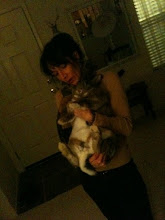Plan and do from PMBOK guide reiterated what I’ve learned in 673 on project management. Timelines are essential, as are the lines of communication. This was emphasized by the first reading, Cervone’s project risk management. I think this is one of the best reasons to have a CMS for managing projects within the organization. Within a CMS you can track all the projects with which you are involved. The leader of an organization should be able to go into a CMS and view the various stages of projects within programs throughout the organization. Our University Librarian does this with our CMS – if one is viewing it a certain way then one can gain something of a snapshot of programs and projects going on throughout the organization.
Cervone contends that when making a decision two forces are at play - the courage to make a decision along with a sense of caution about the consequences. I couldn't agree more with this summation. You have to be brave as a decision maker, but you also have to be frugal and conservative to some extent; you have to consider how that decision will affect others and the organizational workflows, but at the same time if you want to nurture a creative and dynamic organization then you need to be able to make decisions that will help the organization grow and flourish.
I also appreciate Cervone's point that if you wait too long to complete a project that it may turn into a totally different project. I think this idea ties in nicely with Unit 8 and how we explored the difference between long-term strategic planning and the shorter timelines inherent in technology plans. With our rapidly changing technological landscape it seems wise at every juncture to ask "why are we doing this?" Modifying a plan as it progresses is an important part of change management, as is insuring that the project is executed in a timely and organized manner.
Subscribe to:
Post Comments (Atom)

No comments:
Post a Comment